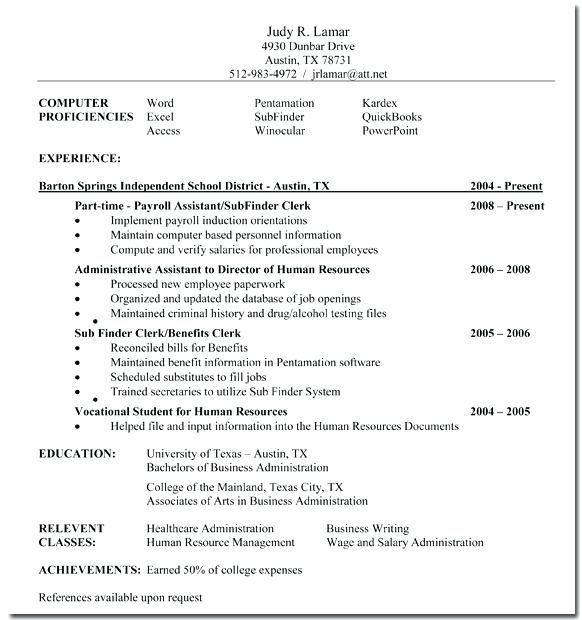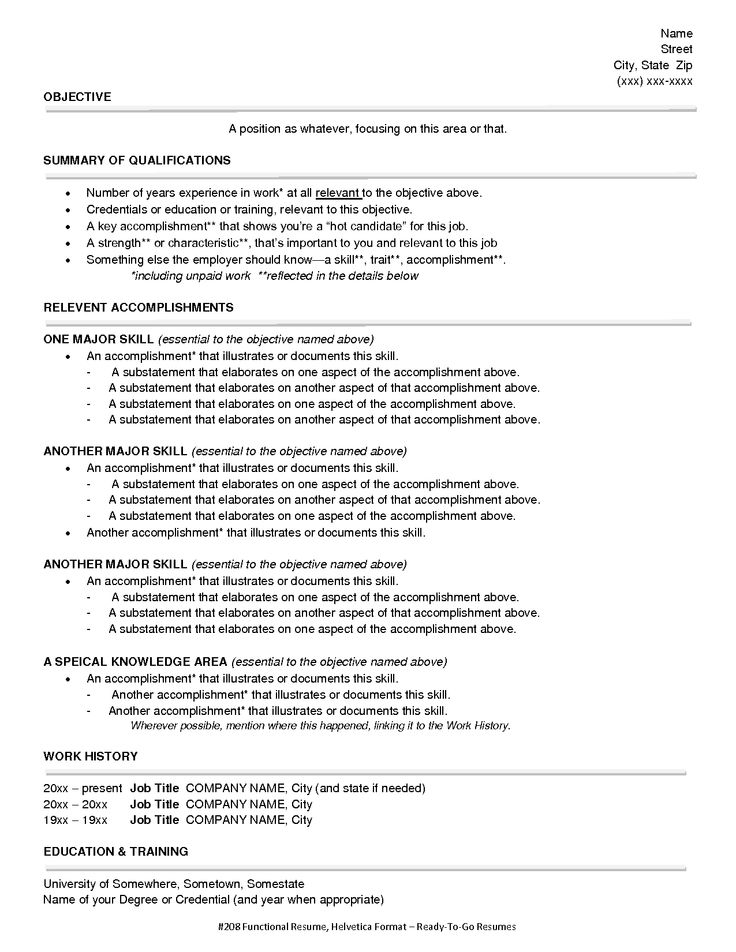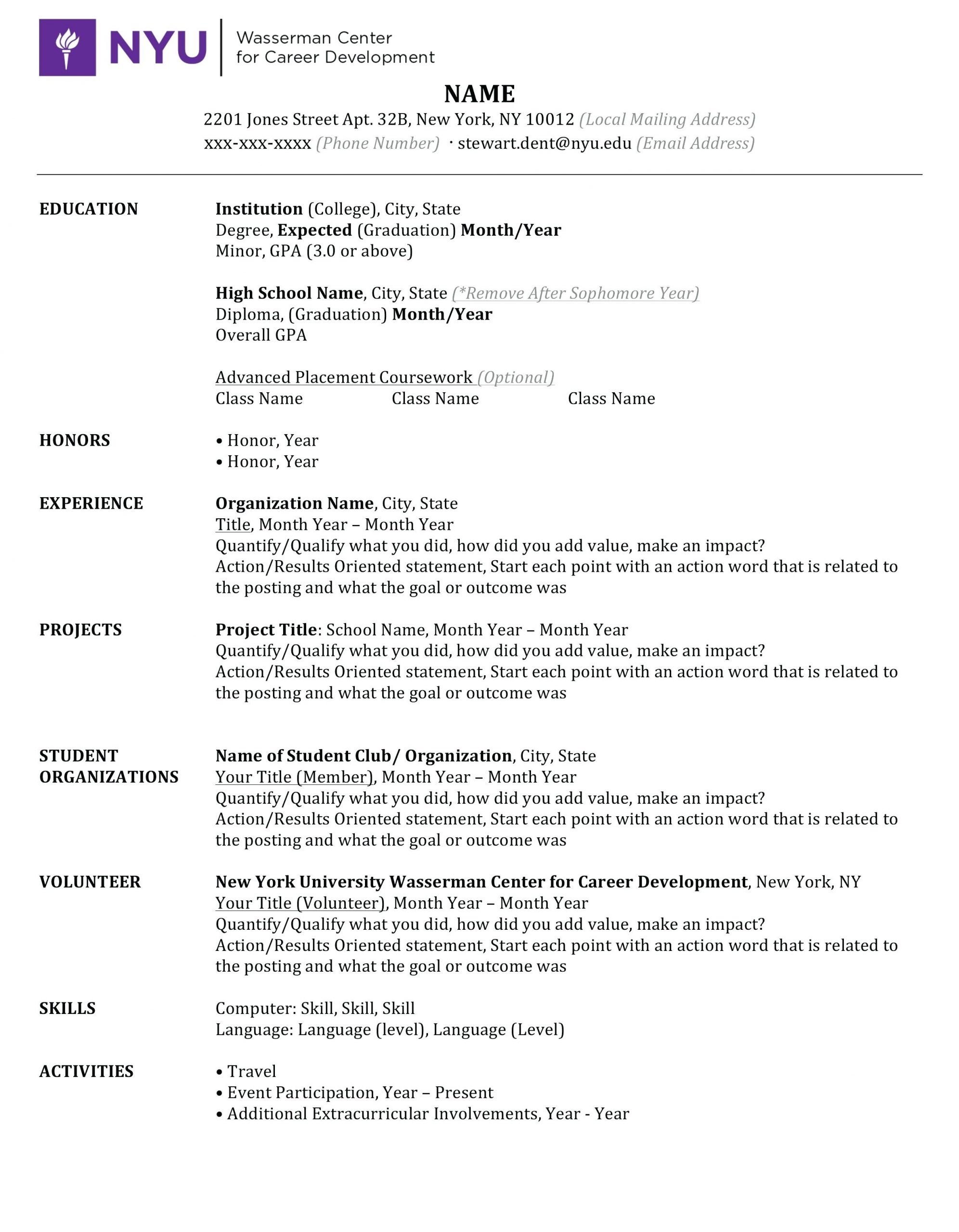Provide Your Job Title
List your exact job title. You can choose to include this below your company’s name and location or on the same line so that it receives as much attention as the company that you worked for. Alternately, if you feel that your job title is more impressive than the company, you can feature your title first with the company directly beneath.
Required Certifications On A Resume
Many professions require its employees to hold certain licenses or certifications. According to the BLS, over 65% of people employed in legal occupations hold licenses and certificates. 76% of Healthcare practitioners hold licenses and certifications.
Some professions may require more than one certificate. For examples, lawyers that have passed the bar need to indicate membership of a stateâs bar. The job description will usually make required certifications clear. These certifications need to be listed on your resume.
Do you work in Nursing, Accounting, or Finance? These industries typically require licenses and certifications.
Include Intriguing Job Responsibilities
Some tasks are so mundane that they’re easily assumed from your job title. If you were a cashier, you obviously operated the cash register, so there’s no need to detail this on your resume. Instead, list tasks the hiring manager is unlikely to know about, such as taking the initiative to reorganize counter displays to better highlight the impulse purchases that are most common in your locale.
Recommended Reading: What Is A Good Typing Speed For Resume
Questions I Get Asked About Dates
- Do I put them in the left margin?
- Do I put them on the same line as the company, but to the right?
- Do I right-justify the date?
- How about after each position if there are more than one in a company?
- Do I include the months or just the years?
- Do I spell out the months? Or use numbers?
- Do I include days?
- How do I handle gaps in employment?
Fortunately for you, Im here to take away many of your options. If you dont align the dates properly, they can be confusing. I prefer the dates of each position to be offset from the dates at each company, like this:
See how clean this looks, and how easy it is for the gatekeeper to glance at the resume and see the progression? Also note that this resume uses numbers for months, and that the dates following each position are in regular font, not bold. You want the dates for the companies to stand out and to be aligned. The dates for each position should be offset and unobtrusive. I have seen people do resumes with the dates on the left marginand it looks goodbut it devours valuable space. I prefer this option.
The Benefits Of A Chronological Resume

The chronological resume is one of the most commonly used styles, and its familiarity alone makes the information easier to absorb. Ideally, it shows the progression of a career clearly.
It can be easier to compile, too, since its orientation toward dates helps you to nail down the details of your own job history.
Recommended Reading: How To Send Your Resume To Recruiter
Save Resume Space For The Most Important Information
Listing online courses doesnât take up valuable space on your resume that could instead be filled with actual relevant experience. Letâs get to that in a bit.
Online courses, such as those taken on Coursera or Udemy, should be carefully assessed using the above checklist. In addition, itâs more important to surface the backing institution than the actual platform the course was taken on .
Taking an online course that doesnât necessarily yield official certifications may still be useful for advancing your career. Although not required, taking courses can show interest in a particular field. This can be especially useful to candidates targeting a job that requires skills not highlighted by the rest of your resume.
Some online courses only help demonstrate part of the required proficiency. These can be left out of your resume along with any others that arenât taught by a well known institution. Lessons taught by the less official online courses can still be useful. For example, they would be great talking points with prospective employers. Save the valuable space on your resume!
Do You Need To Include Months On A Resume
ZipJob Team
5 min read
There are many pitfalls for job seekers who are creating their own resumes. One of the most common of those potential errors involves the question of whether employment months should be listed on the resume.
Other potential problems can arise from the formatting of those dates. So, should you be listing employment months on your resume? And if so, whatâs the right way to list those dates?
Also Check: What To Write In Skills In Resume
Common Ways To List Employment History
The No. 1 reason employers are looking at your resume is to find out if your skills and experience match their needs. How do they know what skills and experience you’ve had, and how can they tell if you will be an asset to their organization? They’ll do it all by reading your employment history section.
You want this section to be powerful and to represent you in the best possible light. However, it also must be clear, concise, and understandable to anyone who reads it. So how can you make your employment history both powerful and concise? Let’s take a look at some of the most common ways to list employment history.
Chronological
The chronological resume format lists your work history with the most recent position at the top. In the example below, Joe titled his employment history section Experience. You can use any title that makes sense for you, such as Work History or Professional Experience.
Select Keywords From The Job Listing
Use the job listing for inspiration as you’re writing your resume. If the listing emphasizes the need for a personable approach to customer service, make sure some of your job responsibilities detail your engaging presentation style, amiable nature and personable approach. Use this tactic carefully so the effect is subtle, and change the language enough to distinguish your resume from the job listing.
Read Also: How To Make A Resume
List Your Jobs In Order
Begin your resume work history with your most recent job and work backward through your last decade of employment. The total length of your resume should not exceed two pages, although it is often better to only use a single page if you have less experience. Omit short-term jobs or those with minimal relevance if necessary.
Related:Resume Format Guide
When You Land An Interview
You should also be prepared to;discuss your college courses;in your interview, when the time comes.
Its a good idea, if applicable, to prepare for the question of why you didnt complete your degree as well.
Remember to be honest and upfront, and cast your decision in the most flattering way possible, without placing blame or being negative.
You May Like: How To Make Resume On Photoshop
The General Rule On Listing Employment Months
ABC CorporationÂ; Â; Â; Â; Â;1/2009 – 5/2021
ABC CorporationÂ; Â; Â; Â; Â; 2009 – 2021
Letâs get the big question out of the way right off the bat. There are some who say that you should always include months on your professional resume â even if it produces gaps in your work history. The reason for that is simple.
You see, if you just list the years of employment, most employers will assume that youâre trying to hide something. And in most instances, they would be right!
Now, it is true that many job seekers have in the past avoided listing employment months when they had work history gaps. And for a time, that approach probably helped many of them avoid questions about time away from the workforce.
However, old strategies often become obsolete with time, as more and more people see them being used. Thatâs certainly the case in this instance. Todayâs hiring managersÂ;and employers will typically see any attempt to avoid listing employment months as an attempt to hide some gap in your employment history.
And letâs be honest here: theyâre usually right in that assessment. After all, the only real reason to leave out the months is that youâre trying to hide a gap.
Dexter: New Blood: Premiere Date Trailer Cast And Everything Else To Knowyour Browser Indicates If You’ve Visited This Link

The character returns this fall on Showtime in a new chapter, dubbed Dexter: New Blood. The 10-episode event series will reunite series star Michael C. Hall and showrunner Clyde Phillips. New Blood is set 10 years after the events of the series finale and finds Dexter relocated to a colder locale,
TV Guide
Recommended Reading: What To Put For Leadership On Resume
How To List Education On A Resume With Examples
The education section of your resume provides hiring managers with a detailed insight into your background and how it relates to the role. When written to reflect the job requirements, your education section can give you an advantage over other candidates. The best way to list your education depends on your work and academic achievements.
There are several ways to list education on your resume. Reading and understanding the job description can help identify the perfect location and level of qualification to include when applying to a position. Not all jobs need your full credentials, so you can check the job listing to see what the hiring managers are looking for. In this article, you can learn about how to list your education on a resume.
Certifications In A Minor Section On Your Resume
Do you need more space on your resume, like people with a lot of work experience? Another resume format that works great is a a small dedicated certificates section. This smart resume space-saving tactic is especially effective when the section is placed in the smaller column of a 2-column resume template.
Putting certifications in a side section is highly recommended for certificates that youâve classified as optional. Or if you can fill major space on your resume with relevant experiences.
This data analyst resume example shows how strategic placement of a small dedicated Certifications section creates more room for the experience section.
You May Like: How Far Back Do You Go On A Resume
Option 3: Describe Projects
Yet another possibility is to actually describe any course projects which are related to your target job. This can be a good approach for candidates who don’t possess much or any related work experience.
For example, a person who is aiming for a job with a focus on information technology might describe a programming project which involved the creation of a complex Excel database. If you received any recognition for the project, or an outstanding grade, you could also mention those.
Coursework in Information Technology
Casleton High School, Castleton, VAHigh School Diploma, May 2019GPA 3.9, Honor Roll Each Semester
How To Format Dates On Resume
Your resume should list your work experience succinctly and clearly for the reader. Employers have many resumes to go through in a short time, and you dont want them to stumble as they read your resume.
That said, write the dates in full ranges, for example, March 2019 to November 2020.Most job seekers leave out months in their resume format, which is a bad idea during your job search.
You need to make sure that your resume dates include months to make them as straightforward as possible both for the hiring manager and applicant tracking systems .
Additionally, youd want to add your graduation year or the dates when you got any certifications.
Finally, dont use numbers to represent months. For example, dont use 3 to represent March or 12 to represent December. While using this technique isnt incorrect, it just gives the ATS and recruiters a hard time processing the dates.
Remember, recruiters go through many resumes, and the chances are that they are already fatigued.
Check out the video below to learn how to format dates with a live resume example.
Recommended Reading: How To Write A Resume For Cna With No Experience
How To Format Education On A Resume
While people have different education backgrounds, employers expect that education on a resume be formatted in a readable way.
Follow these steps to format education on a resume:
Dates Of Education And Professional Training
Do list your education and professional training in reverse chronological order.; You may wish to consider breaking the information up into two separate sections, depending on how many qualifications and courses you are listing.
Dont always detail secondary school education.; If you are a graduate with several years experience under your belt, or you have further tertiary education to list on your CV, there is no real need to list your A Level or GCSE qualifications, as these will have been prerequisite to your university education.; Similarly, I often see non-graduate C-level executives wondering about whether to list A Levels or O Levels.; In fact, this could then draw unnecessary attention to a missing degree, when the experience gained since school or university is far more relevant and compelling.
Do include the date of your degree if you are a recent graduate.; If you gained your degree ten, twenty, or thirty years ago, then you can opt to list your degree without the date you acquired it.
Dont include and list dates for every professional training course you have ever completed.; Instead, think about what the reader will want and expect to see, and remove anything that represents white noise.; As a general rule of thumb, do make sure you are consistent, so if you list the date you completed one course, follow suit for others.
Don’t Miss: Where Should Skills Go On A Resume
How To List College When You Didn’t Graduate
Whether you’re currently working toward a degree, or have no plans to graduate, don’t let a lack of a degree stop you from including your time spent at college or relevant details about completed coursework on your resume.
Your college classes, even without an earned degree, can;help you meet an employer’s educational requirements.
If you did not graduate from college, make sure that your resume does not indicate otherwise. Many employers will do a reference check prior to hiring someone. Any information found to be intentionally misleading will end your candidacy and is grounds for firing if you have been hired.
How To List Multiple Positions At One Company On Resume

As you rise the ranks at your company, learn how to format a resume the right way.
Writing a resume is often a daunting challenge. It can be difficult to determine what information to include, how to organize and name each section of your resume, and the best resume format to tell your career story.
One of the most common questions professional resume writers receive is How do I list multiple jobs within the same company? It’s a perfectly understandable dilemma. If resume sections are typically separated by job and company, what do you do when there is only a foggy distinction between the two? Well, this could be done in one of two ways you could either combine the experience into one listing or separate it into multiple. Let’s take a look.
Don’t Miss: How To Put Cum Laude On Resume
Options For Listing Education On A Resume
Not sure how to list your college degree on your resume? How should you list your expected graduation date if you’re an undergraduate student? What if you didn’t go to college? How about if you’ve already graduated? Alternatively, what do you do if you haven’t yet graduated but intend to complete your degree at some point in time?;
Even if you didn’t graduate, there are options for presenting your educational background in a positive manner. An;entry-level resume;will often present more educational or training information than would a resume for someone who has been in the workforce for many years.;
If you dont have a lot of work experience to prove your skills and capabilities on the job, it can be important to list any relevant college coursework, even if you didnt graduate with a degree.
Here are a few options for including your education, as well as for mentioning credit you have earned for college-level work on your resume even though you didn’t graduate.
What Is The Best Way To List A Patent On A Resume
The best way to list patents on a resume is to give them their own section, or to list them along with the workplace they were developed at. Having a patent shows an extreme dedication to the development of new technology, as well as personal drive. To best make sure an employer sees this while skimming your resume, it is important to cite patents clearly, and with patent numbers listed. Patents which are still in the application phase should also be listed.;
Don’t Miss: What Does The Ideal Resume Look Like
Limit Your Resumes Work History
Its a smart practice to limit how far back you list your job history when you have more than a decade of experience in the workforce.
Older workers can limit their work history. Unless the job calls for a huge amount of experience, most coaches recommend including the last 10 to 15 years of your work history, with dates, on your resume. Anything older than that can be kept off the resume. Or, it can be included as a brief summary with job titles and company names, but no dates, in an Additional Experience section, says Reynolds.